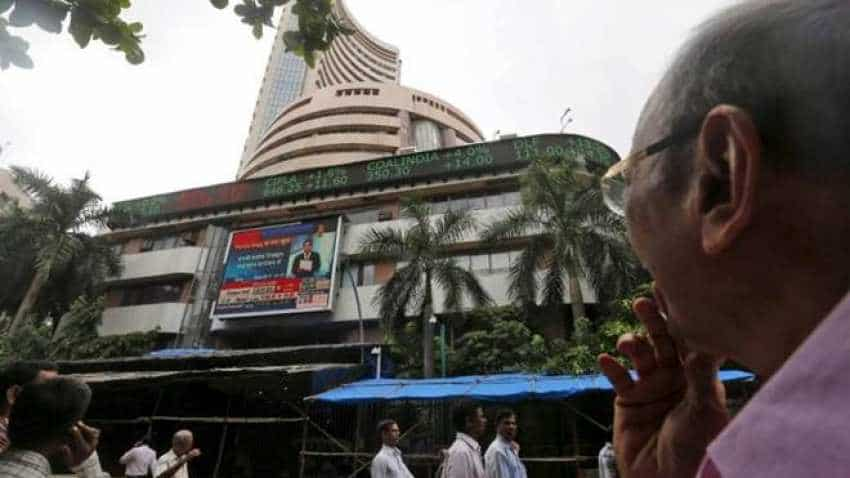Sensex, Nifty, Bank Nifty boom? Check what experts are saying
Government has already made it clear that they are not going to bow down at the FIIs pressure tactics as the step has been taken to ensure the safety of the domestic small investors in the stock market.

Stock Market: Indian indices have been bleeding for weeks as the surcharge levied on the FPI's in the budget has not gone down well. Finance Minister Nirmala Sitharaman has already made it clear that there is no question of backtracking as the Modi 2.0 Government has taken this decision after serious thought. She announced government plans on Thursday last week and the FPIs responded with a heavy selloff on Indian indices thereby putting a question mark over the Dalal Street investors. So, is the Sensex, other indices boom over.
"Flattening of yield curves is usually a lead indicator of things not working well. The historical weight of the evidence reflects; whenever this has happened it was succeeded by economic downturn and meaningful correction in equities," said Dharmesh Kant, Head, Retail Research, IndiaNivesh Securities.
Talking about the infused liquidity and stabilising economies Kant said, "Post bottoming out in March 2009 S&P 500 and has been notching higher highs. US equities along with Indian equities are in 10 years of continued Bull Run. Broader market representative Russell 2000 has been underperforming since September 2018. Russell 2000 is down around (-10 per cent) in the said period while S&P 500 has gained around 3 per cent and the bond yield curve is inverted. Let’s examine earnings and valuation multiples a bit closely. Most significant being corporate tax rate cut effective January 2018. It was brought down to 21 per cent from 35 per cent. A back of the envelope calculation shows S&P 500 EPS grew by mere 1.8 per cent in 2018 over 2017, if we adjust the tax rates based on 2017 ( On the reported basis it stands at 23.80 per cent). Effectively the boost in earnings of 2018 was primarily on account of tax cuts. Whilst, S&P 500 is up around 12 per cent since December 2017 and Russell 2000 is up around 17.09 per cent.
See Zee Business Live TV streaming below:
"Taking a closure look at this PE table, S&P 500 traded at a PER of 22.31 at 31st December 2017 which is close to +2 std deviation from the mean of 17.85x. Now if we adjust the earnings of 2018 as per earlier tax structure, then it is trading at a PER of 23.90x on ttm basis. From 2012 onwards (last 7 years) for S&P 500 revenue grew at a Cagr of 3.71 per cent, Ebidta 4.79 per cent, earnings 7.41 per cent (if adjusted for tax rate in 2018 earnings cagr would be 3.95 per cent), cash and cash equivalent at 5.73 per cent, other assets at 3.84 per cent while the index has delivered around 10% cagr respectively. Clearly, companies in the US are finding it difficult to redeploy cash generation through businesses in business, in fact, balance sheet statistics suggests cash is either used treasury operation or given back to investors through dividend and other corporate actions," said Dharmesh Kant of IndiaNivesh Securities.
Standing in sync with the IndiaNivesh views Prakash Pandey, Head of Research at Fairwealth Securities said, "The recent tank is caused by the FIIs heavy selloff as the budget surcharge being levied on the FPIs hasn't gone down well among them. But, the Indian Government has already made it clear that they are not going to bow down at the FIIs pressure tactics as the step has been taken to ensure the safety of the domestic small investors in the stock market. So, if the government continues with its stand for coming 8-10 trading sessions, then we can further witness some downside and Nifty 50 index may show 10,750 in coming four to five trading sessions."
12:29 PM IST






 EXPLAINED! Anil Singhvi on his campaign to protect investors and save their hard-earned money; reveals market strategy going forward
EXPLAINED! Anil Singhvi on his campaign to protect investors and save their hard-earned money; reveals market strategy going forward Share market today: Abbott India, Aavas Financiers share prices rise, fight off negative Sensex, Nifty trend
Share market today: Abbott India, Aavas Financiers share prices rise, fight off negative Sensex, Nifty trend Anil Singhvi’s Strategy March 30: 8,300-8,400 is Next Support Zone on Nifty
Anil Singhvi’s Strategy March 30: 8,300-8,400 is Next Support Zone on Nifty Stocks in Focus on March 30: MCX, Delta Corp to Lupin; here are the 5 Newsmakers of the Day
Stocks in Focus on March 30: MCX, Delta Corp to Lupin; here are the 5 Newsmakers of the Day Stock Market: Sensex, Nifty pare early morning gains; Axis Bank, Coal India, MMTC shares gain
Stock Market: Sensex, Nifty pare early morning gains; Axis Bank, Coal India, MMTC shares gain